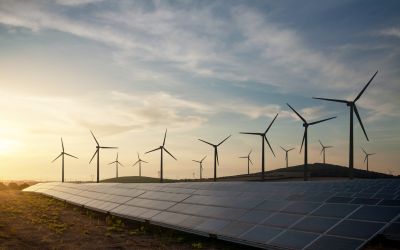IEA: Major growth of clean energy limited the rise in global emissions in 2023
Global energy-related carbon dioxide (CO2) emissions rose less strongly in 2023 than the year before even as total energy demand growth accelerated, new IEA analysis shows.

Global energy-related carbon dioxide (CO2) emissions rose less strongly in 2023 than the year before even as total energy demand growth accelerated, new IEA analysis shows, with continued expansion of solar PV, wind, nuclear power and electric cars helping the world avoid greater use of fossil fuels.
The report notes that without clean energy technologies, the global increase in CO2 emissions in the last five years would have been three times larger.
Emissions increased by 410 million tonnes, or 1.1%, in 2023 – compared with a rise of 490 million tonnes the year before – taking them to a record level of 37.4 billion tonnes. An exceptional shortfall in hydropower due to extreme droughts – in China, the United States and several other economies – resulted in over 40% of the rise in emissions in 2023 as countries turned largely to fossil fuel alternatives to plug the gap.
The analysis summarises that had it not been for the unusually low hydropower output, global CO2 emissions from electricity generation would have declined last year, making the overall rise in energy-related emissions significantly smaller.
The new findings come from the IEA’s annual update on global energy-related CO2 emissions – and the inaugural edition of a new series, the Clean Energy Market Monitor, which provides timely tracking of clean energy deployment for a select group of technologies and outlines the implications for global energy markets more broadly.
IEA Executive Director Fatih Birol said: “The clean energy transition has undergone a series of stress tests in the last five years – and it has demonstrated its resilience."
“A pandemic, an energy crisis and geopolitical instability all had the potential to derail efforts to build cleaner and more secure energy systems. Instead, we’ve seen the opposite in many economies. The clean energy transition is continuing apace and reining in emissions – even with global energy demand growing more strongly in 2023 than in 2022. The commitments made by nearly 200 countries at COP28 in Dubai in December show what the world needs to do to put emissions on a downward trajectory. Most importantly, we need far greater efforts to enable emerging and developing economies to ramp up clean energy investment.”
From 2019 to 2023, growth in clean energy was twice as large as that of fossil fuels. The new IEA analysis shows that the deployment of clean energy technologies in the past five years has substantially limited increases in demand for fossil fuels, providing the opportunity to accelerate the transition away from them this decade.
The deployment of wind and solar PV in electricity systems worldwide since 2019 has been sufficient to avoid an amount of annual coal consumption equivalent to that of India and Indonesia’s electricity sectors combined – and to dent annual natural gas demand by an amount equivalent to Russia’s pre-war natural gas exports to the European Union.
The growing number of electric cars on the roads, accounting for one-in-five new car sales globally in 2023, also played a significant role in keeping oil demand (in terms of energy content) from rising above pre-pandemic levels.
The Clean Energy Market Monitor shows that clean energy deployment remains overly concentrated in advanced economies and China, highlighting the need for greater international efforts to increase clean energy investment and deployment in emerging and developing economies. In 2023, advanced economies and China accounted for 90% of new solar PV and wind power plants globally, and 95% of sales of electric vehicles.
The report highlights that not all clean energy technologies progressed in 2023. Heat pump sales fell marginally as squeezed consumers held back on purchases of big-ticket items, highlighting the importance of continued policy support for equitable transitions.
Read the full report here.




_400_250_s_c1.png)
_400_250_80_s_c1.jpg)
